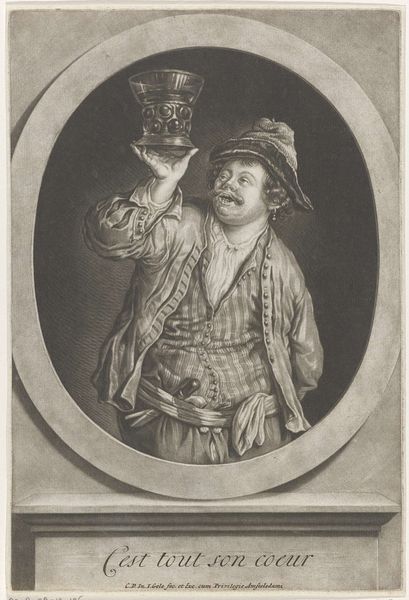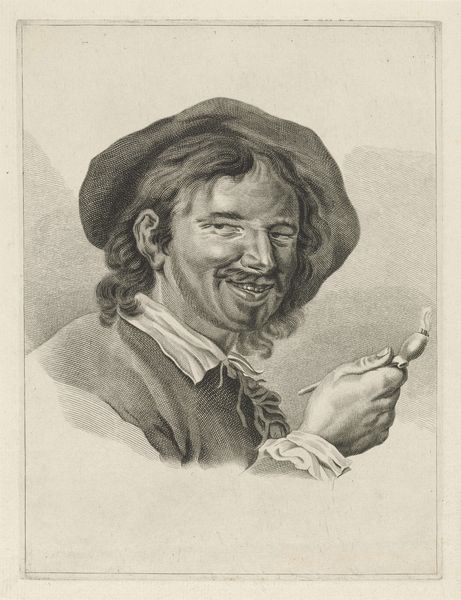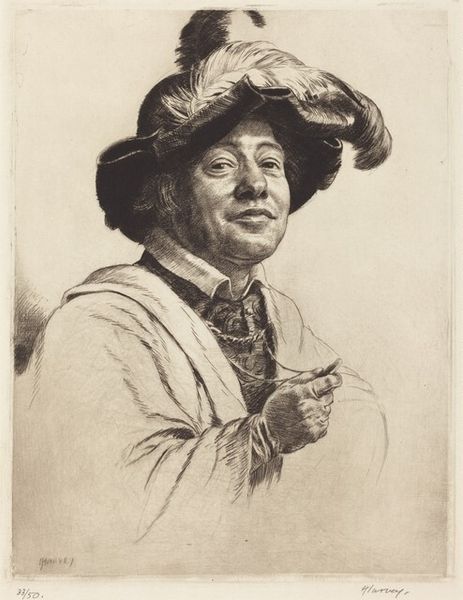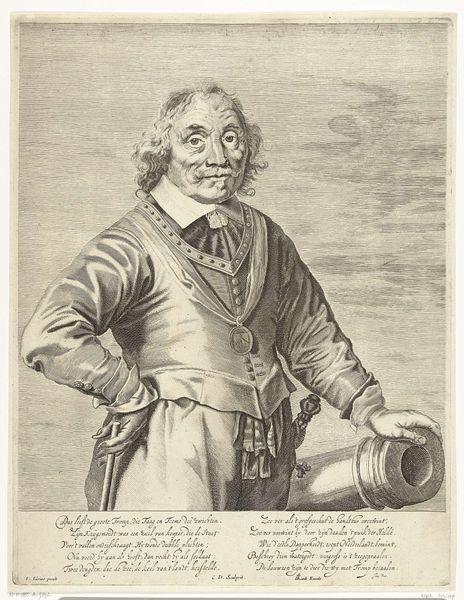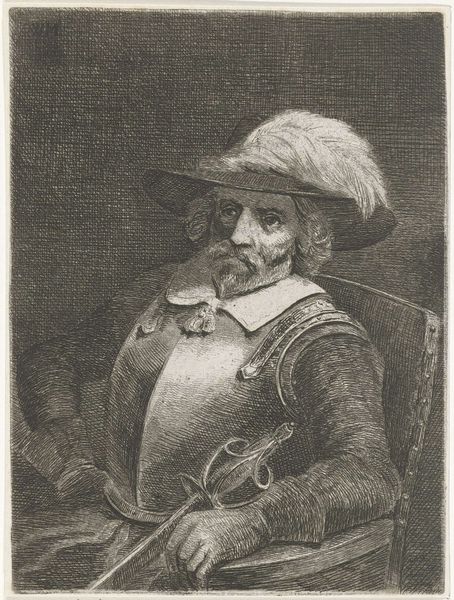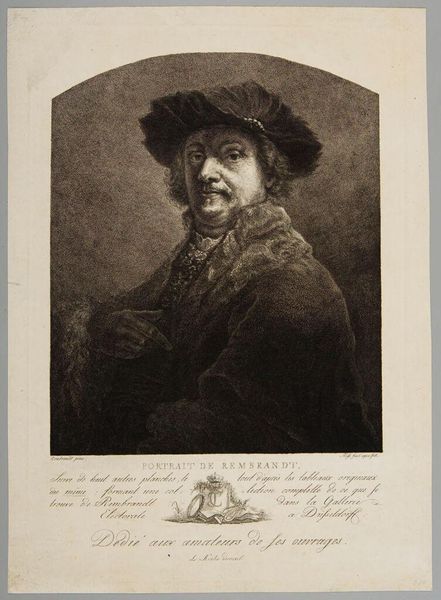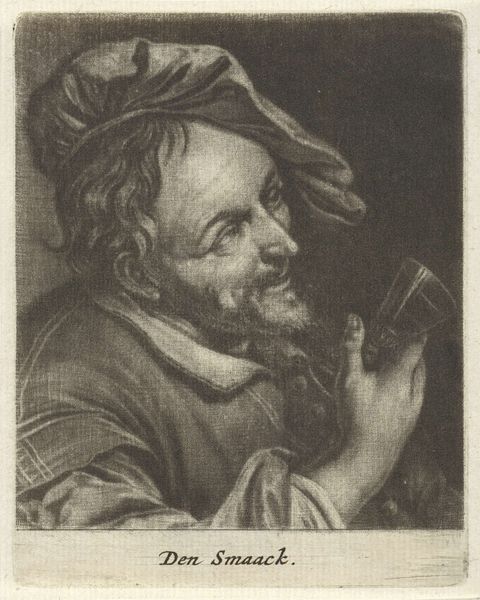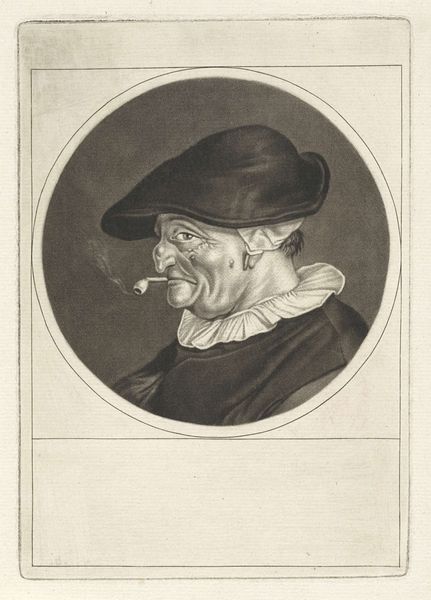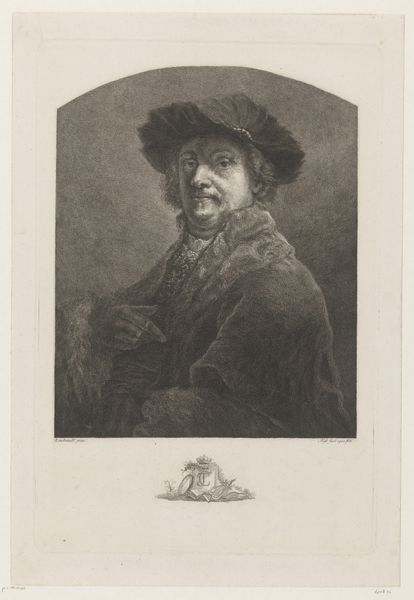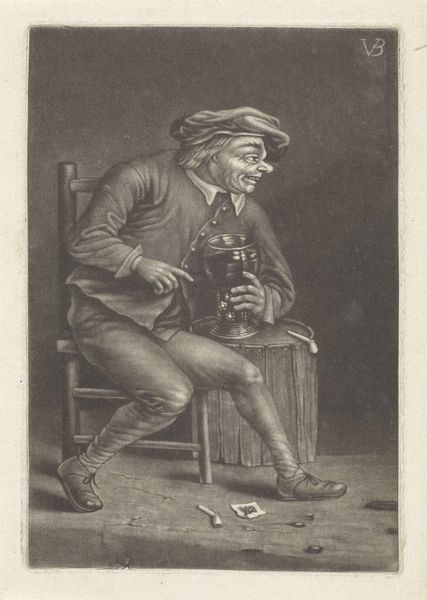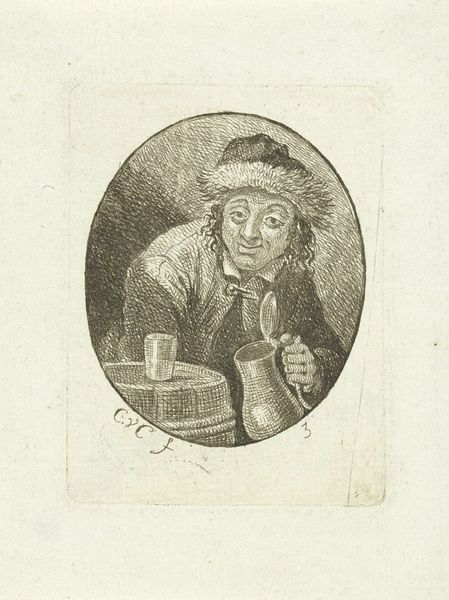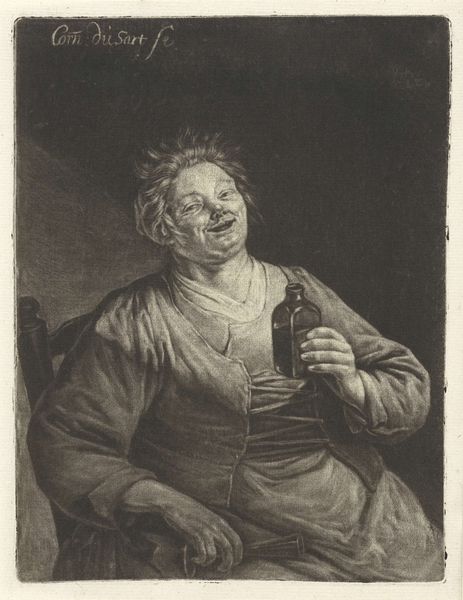
print, glass, engraving
#
portrait
#
baroque
# print
#
charcoal drawing
#
glass
#
genre-painting
#
engraving
Dimensions: height 160 mm, width 118 mm
Copyright: Rijks Museum: Open Domain
Editor: Here we have "Man met een lege roemer", or "Man with an Empty Roemer," an engraving by Johannes de Groot, made sometime between 1698 and 1776. There's almost a gritty realism to this portrait, and, I can't help but notice that the man seems rather pleased with himself despite his empty glass. What can you tell me about it? Curator: Well, looking at this from a historical perspective, engravings like these served a very public role. Consider the context of genre painting blossoming in the Dutch Golden Age and beyond. De Groot's print gives us a window into the social values and class dynamics tied to depictions of everyday life. He's referencing, crediting, and publishing work from a first generation artist—a generation that was almost entirely priced out of reach for the average patron, leaving the broader public to enjoy via the printed arts like this engraving. How do you think it may have been received back then? Editor: Hmm…given how common such scenes would have been at the time, I would assume this kind of imagery, featuring the common man, had a degree of popularity, while perhaps reinforcing the status quo. Sort of a "boys will be boys" acceptance. But if so, why the detail for expensive imported glassware? Is this possibly a commentary, beyond just simple documentation? Curator: Exactly! The roemer isn't just a drinking vessel. Its presence alludes to the broader themes of trade, Dutch prosperity, and, potentially, its excesses. De Groot isn't just presenting a scene; he's inviting viewers to contemplate their relationship to consumer culture and national identity through popular imagery. Notice also the credit line: De Groot is very openly producing an engraving based off someone else's design. How do you think that shapes or reflects the "politics of imagery" that I focus on? Editor: So, he’s really democratizing art, right? Using print to share the work of an unreachable artist and encouraging the burgeoning middle class to engage with contemporary cultural ideas. I’d never considered that about an image like this. Thanks for helping me view it through such a historical lens. Curator: Of course. I find that uncovering the intentions of an image helps reveal some of our own presumptions about historical societies and even about art's place in the contemporary world.
Comments
No comments
Be the first to comment and join the conversation on the ultimate creative platform.
